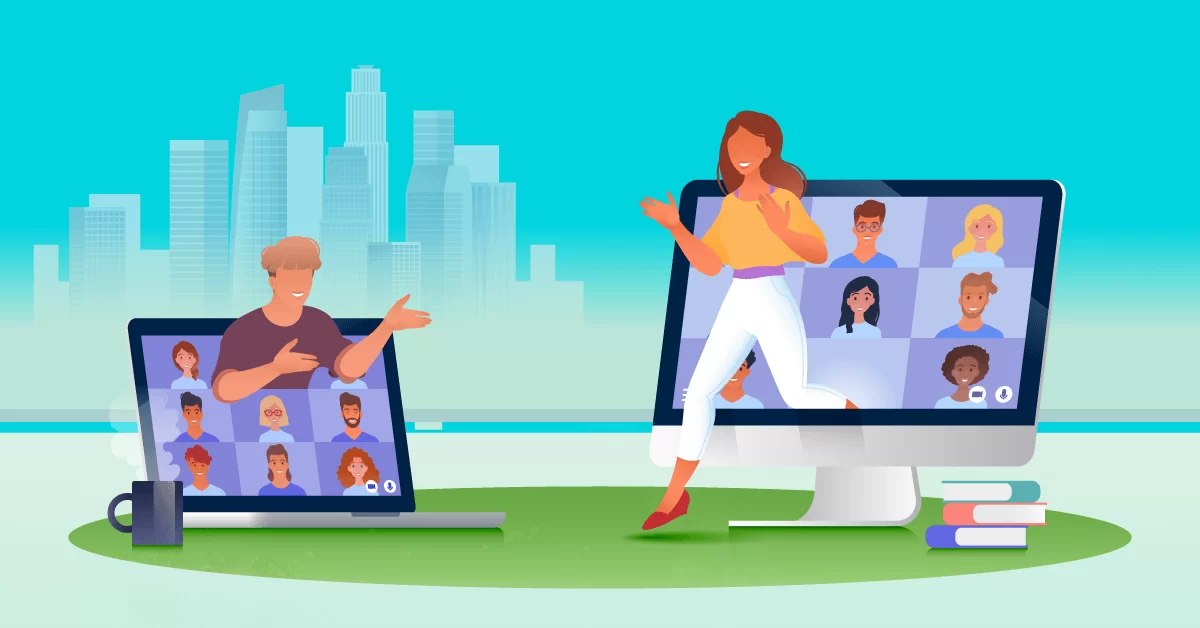How to use case studies in online training
Interactive case studies are extremely useful in online training. You can embed links to reference materials, appendices, and detailed figures. Instead of boring blocks of text that most people will overlook, these links can be hypertext, pop-up boxes, or video annotations. You can spice them up by including audio prompts, animated visuals, memes, and GIFs.
But how can you include case studies in your training program? Here are 6 unconventional ways to do that:
1. Create social learning demos
These days, almost everybody is on social media. Coming from a point of knowledge can make it difficult to train employees. Online instructors may take a lot for granted and overlook key information, assuming corporate learners already know it. At the other extreme, they might include basic, entry-level content that learners are already familiar with.
Case studies in online training are a good way to find the right balance. Show corporate learners how other people are using social media platforms to benefit from social learning opportunities. This way, they can ask questions, both about the methodology and the platform itself.
Online training often means there isn’t a physical instructor, so there’s no one to ask questions. Add a pop-up character with a text box or voice module where they can input questions. You could also use lightbox prompts at various stages of the case study, which can click through to relevant reference material.
2. Encourage favorable performance behaviors
Case studies come in a variety of formats. They could be charts, graphs, PowerPoint slides, transcripts, or videos. What they have in common are visual representations that help with knowledge assimilation.
Present your learners with samples of good and bad performance behaviors. Use yes/no quizzes to ask them which ones they liked and which ones they didn’t. They can break it down further, offering specific reasons.
As they identify and correct the mistakes of the subject in the case study, they reflect on their own errors. They can then learn how to correct them without feeling judged or self-conscious. At the same time, they can pick up tips on how to communicate more effectively.
3. Prepare for emergency situations
Employees in every department need to be ready for the unexpected, such as natural disasters that threaten their safety, or on-the-job emergencies that require a cool head. Case studies in online training can be transformed into interactive simulations to prepare employees for every eventuality.
For example, consider a hazardous spill in the warehouse that could potentially endanger the staff’s health. The employee must put on the proper safety gear and clean up the spill before time lapses. The online training simulation might also provide them with pointers or feedback after the fact to help them improve their response times.
Immersive case studies can be used in virtually any aspect of your online training program. For example, teaching customer service associates how to react in the event of a fire and safely evacuate the facility, as well as the negative repercussions they might face if they are unaware of the safety protocols.

4. Cultivate brand awareness
Brand awareness usually focuses on big companies and famous logos, but this can puzzle employees. They’re left wondering how it applies to them and their organization. Personalization is a good way to help lessons sink in. Corporate learners can put themselves in your brand’s shoes. Then, they will better understand how to apply brand awareness to their own situation.
The key to brand awareness case studies it to make them relatable. For this reason, case studies featuring individuals can be more helpful. Putting a face to branding techniques can show corporate learners how to translate methodology. Your case studies should be both informative and entertaining.
5. Perfect sales pitches
In some cases, employees may not know how to translate product features and specs into effective sales pitches. A case study can illustrate how the product offers real-world advantages, as well as which customers are the target market.
For example, the main character in the case study purchases the product and uses it to improve their work process and manage their time more efficiently. This way, your sales staff is able to see how the item’s features and functions translate into practical applications. They can even provide examples to customers who are reluctant to seal the deal, as they’re now able to articulate how the product or service targets specific customer pain points.
6. Gauge employees’ reactions to everyday situations
Case studies are also great eLearning assessment tools, especially when it comes to emotionally charged situations in the workplace. For example, create a video-based study that depicts an angry customer who would like to return an item past the specified date.
Ask employees to pause the video before the conclusion and explain how they would handle the situation. Then they can resume the video after the fact to watch how it’s done and compare their response.
This gives them the opportunity not only to observe how certain behaviors lead to certain outcomes, but also to reflect on their own performance and personal thought process.
With these tips, you can incorporate unconventional case studies into your online training program. One final tip is to avoid using actual names or other personal details in your case study – unless, of course, you have permission from the individual or entity. Otherwise, you might end up making employees feel singled-out or even encounter legal issues.
You should also look for ways to make your online training course even more relatable and memorable for modern learners. You can start by looking up tips to create interactive case studies for your eLearning course.



